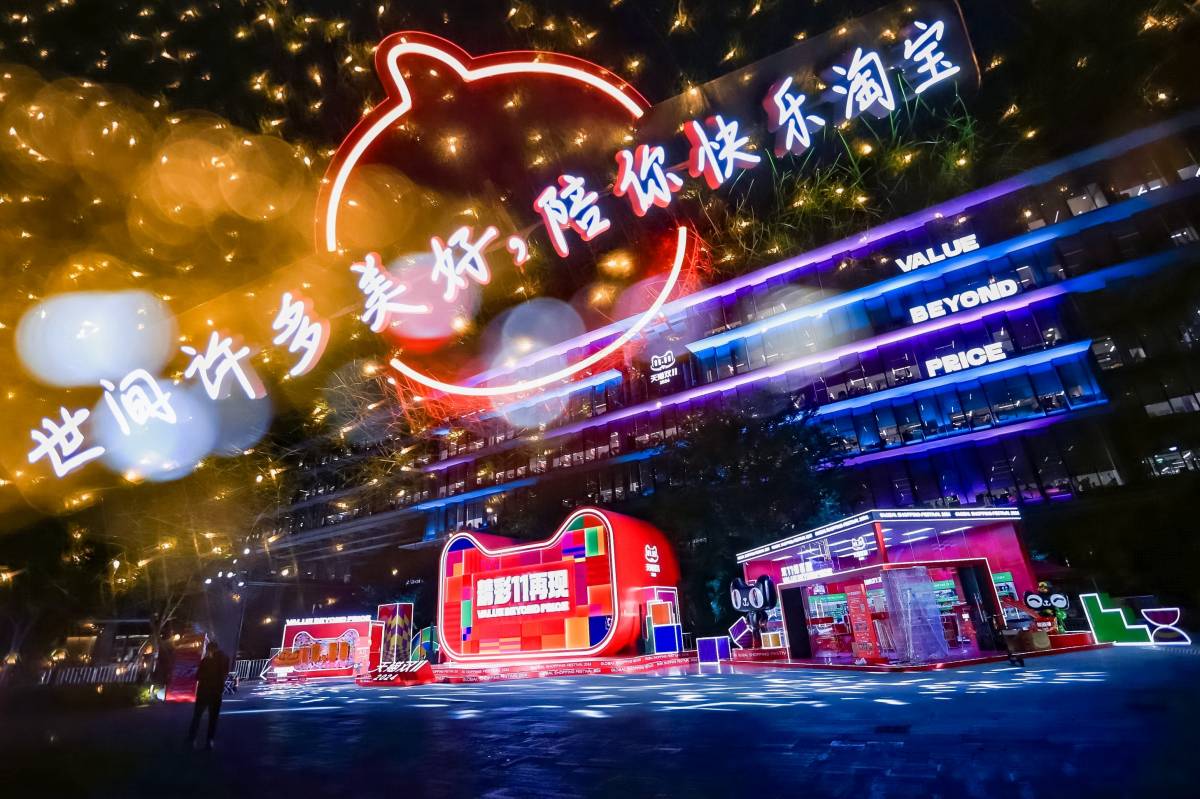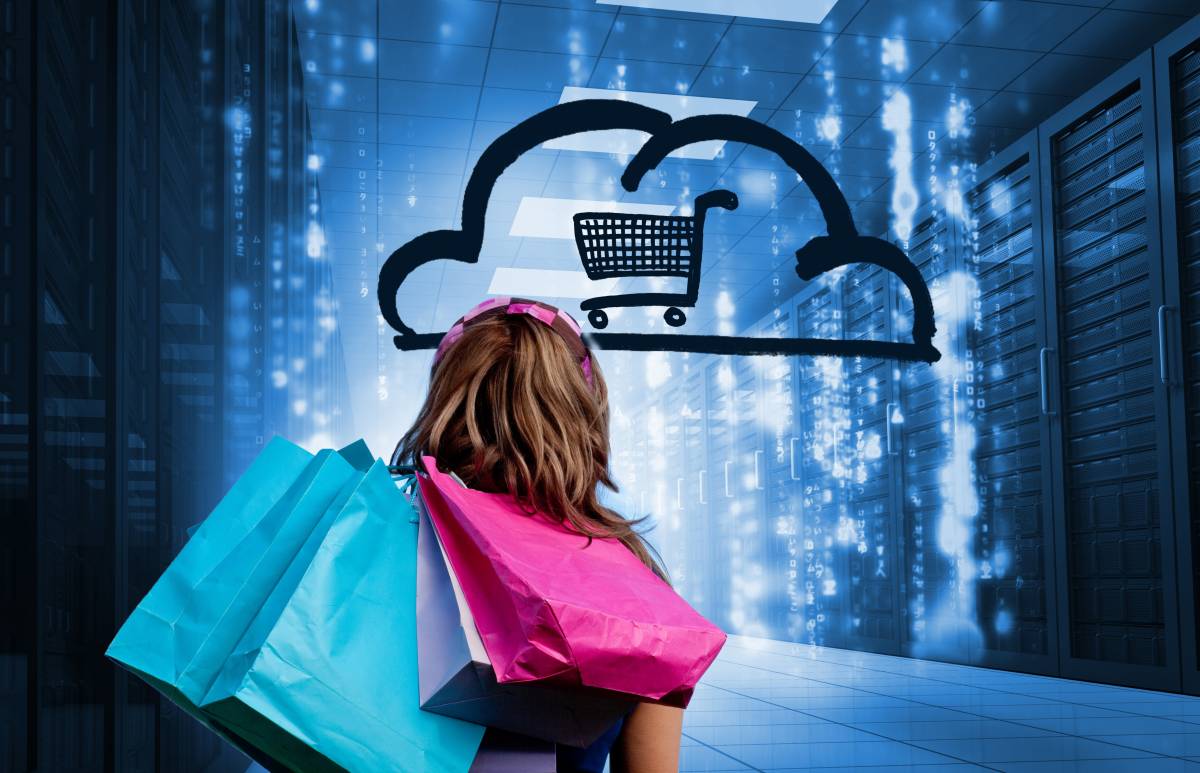
Click on the “play” button below to listen to the podcast.
Before Covid, it wasn’t unusual for small American brands to spot Mark and Zoe outside their booths at trade fairs, hunting for products. Their goal is to make American brands popular in China. And they know from vast experience what Chinese consumers like.
Alizila’s Monica Suk: You guys have been in this livestreaming game from a very early stage. You have witnessed all the impact and changes that it has brought into e-commerce. What made you think ‘livestreaming is it’?
Mark Yuan: When we first tried livestreaming, I think it was in 2016. In the beginning, we just thought this could be a new form of social media where influencers or brands can connect to their consumers or audiences. But little did we know how much potential that e-commerce had. Livestreaming, the way I described it to American and European audiences is a combination of QVC, Instagram Live and Etsy. It’s an e-commerce website all rolled up into one immersive, 3D, live, interactive, social, as well as very, very engaging shopping experience. As we continue to help brands selling through live streaming, we understood this will be an important part of the future of e-commerce and retail.
MS: You started in 2016. It must be very different now. How has livestreaming changed over the past few years? And as a business, how do you differentiate yourself to stay competitive?
MY: When we first took off, there were a very few live streamers. And in the very beginning, it was not only about selling but more about discovering the world and having interesting, engaging content to offer a reason for audiences to tune in and watch some live content. But as years went by, more and more Brands onboarded on Alibaba’s Tmall and Taobao Live, and it has become a completely different landscape. Nowadays, in China, livestreaming is the number one growth engine that drives e-commerce. I remember in 2017, well, in 2016, there was no official data for the livestreaming market size.
But the very next year in 2017, the market size was $3.6 billion. And in a very short period of time, I believe this year, that number is going to be $141 billion, which is 4,000% growth. And we still believe this livestreaming e-commerce is still in its infancy, if not, adolescence stage. We still have a lot of room to grow in China when it comes to livestreaming e-commerce. Yes, the landscape has changed and more and more influencers are coming onto the platform. So for us, as a company, we need to help our clients, which are brands and the corporations in the West, to understand what type of interesting content they should be creating, how to build their live streaming cultures, practices, as well as how to be engaging. That’s what we’re focusing on the past couple of years.
MS: How do you deliver for the brands you’re selling? What kind of services are you providing nowadays for the brands that you work with?
MY: We started livestreaming as in 2016. But in early 2019, because the demand for livestreaming services skyrocketed in the past few years, we just couldn’t keep up with the demand. But when you look these great brands from the US in Europe, they don’t have access or know-how to enter the Chinese market. We thought, instead of just selling on behalf of the brands, why not enable these brands to have the livestreaming capabilities on their own? Who better represent themselves than the brands or the content creators themselves to do this? So we launched the first of its kind, livestreaming e-commerce consultancy services in the U.S.
Basically, what we do is help brands to add livestreaming capabilities by providing consultations, training, helping them build their teams, evaluating their teams, training their teams, helping them come up with great content. Some of our services are event-based. We helped Alexander Wang to launch their first ever livestreaming event on Tmall a few months ago. It was a wildly successful event. Our team, scripted the event, executed it, directed it, and just had the entire team onboard and gave them their first livestreaming experience and delivered amazing results.
MS: For these American brands livestreaming is new, but also Chinese market is new. And so everything’s new for them. How long does it take normally for them to understand the market and what’s their feedback on your training and consultation?
MY: When we first started our career in the fashion industry in 2004 and launched our company in 2009, the landscape for Western brands entering the Chinese market has changed dramatically. Back then, when we first started our career, it was more traditional. So more like finding the right distributors in China, finding the right partners and going in like a joint venture kind of situation. There were a lot of risks involved a lot of overhead up from cost to set up that infrastructure and finding the right partner that’s going to carry you in the next few years. That has changed tremendously.
With Taobao with Alibaba, you have easier access, less overhead expense and less risk you have to take on to test the Chinese market. But with the coming of livestreaming and maturing of livestreaming, now, brands no longer have to fear not knowing anything about the Chinese market. They can go nimble, they can go agile, they can test the Chinese market through livestreaming. I mean, it is still a learning curve. I’m not saying that the Chinese market is a given. No, it is not. It is a completely different market. But now with Taobao and livestreaming, it’ll be easier to build that customer base more directly, test them and see if your products and collection actually work before formally launching the brand in the Chinese market. So I would say through Alibaba platforms, number one, it will be much safer, less costly and will be more nimble, agile and effective
MS: Consumer behavior and trends are changing very fast in China. So live streaming is a way of getting that instant feedback and adapting to the new trend.
MY: Absolutely. I mean, think about how e-commerce has evolved in the last 15 years. Although it has continued to grow as the offline retail declined, the landscape for e-commerce has changed. Think about when was the last time you shopped at a branded website. And also think about e-commerce for Gen Z. People don’t shop or discover products as the way they used to. Now livestreaming offer them a direct and very effective channel for brands to communicate their brand story as well as explaining their products. Just think about a regular consumer discovering a shopping item, making that purchasing decision. That process has changed. Now we have to keep up with shortening that time and livestreaming would be a perfect way for brands to build that directly relationship and share what their products, what their brand is all about.
I remember having the conversation with an industry leader. He said, “you know, Mark, after you explain livestreaming to me, it actually solves a fundamental problem for me.” Because he was actually looking for a pair of snow boots for his upcoming ski trip. He added the product five times into the shopping cart. But he never pulled the trigger. Because he had he had very simple question — How flexible the boot is.
He wanted to know whether it was too stiff, or he can go with the feet go with his movement. But not enough videos, photos, or he didn’t have the time to communicate with the customer service. Just imagine if livestreaming is available, he will ask that question during the livestreaming. And the livestreaming host or the brand can immediately address his concerns, and therefore really increase customer loyalty and immediately convert that sales. It’s ‘See now, buy now and get your questions answered now’ kind of mentality. That’s one of the reasons that makes livestreaming so powerful.
Zoe Zhang: And I can piggyback on that. Customers have very different questions regarding different products, and being able to answer their personal questions on the spot, while they are still interested in the product really makes the final kick of the selling in the purchase process.
MY: That’s a great point, we have to understand the consumers. But nowadays, most brands are no longer building that direct relationship. Because, number one, most consumers don’t buy from branded websites anymore. They go to Net-a-Forte, Alibaba and Amazon type of e-commerce marketplace for one-stop shopping. And two, they’re giving too much power to the distributors, showrooms, retailers, and agents.
So they’re no longer building that relationship. But with livestreaming, you’re actually putting that control and power back to the brands and the retailers for them to form that relationship and understand more about their consumers. And from the brands’ perspective, you have to understand, most brands create products after doing a little bit of market research. But it’s still almost like throwing a dart in the dark, and just hoping that your new collections or new products will take off. But livestreaming will be like giving a crystal ball into the brand’s hands that you can directly ask what consumers prefer and get their feedback instantaneously. So that type of relationship, that type of communication was never possible before. Now it’s possible.
MS: Zoe, you’ve been the star of livestreaming sessions for your clients. Can you give me some examples of how you handle your livestreaming sessions differently now, from the way you used to?
ZZ: To compare what we do now there’s change, but the essence is the same. Let me let me talk about what the essence is. In the beginning, livestreaming started showing exclusive contents, like making people very curious and making people tune in and to watch something that they don’t see every day. For example, that we at the very beginning of our livestreaming, we showcased a 43 million townhouse in Manhattan, which was located in the so-called golden coast of Manhattan in Upper East Side.
And now it’s kind of the same, the essence is still the same. We have to give them a reason to tune in and watch. But the way it’s translated into livestreaming is very different. Before they wanted to see something big and grand. Now they want to get really personal. For example, when we designed the livestreaming for Alexander Wang, and they wanted to encourage our customers to prepare some personal questions and to ask Alex and He will answer it on the spot during the livestreaming. Some of the questions were even like ‘your hair is so beautiful, what kind of shampoo do you use?.’ And ‘What’s your favorite exercise?’ which made it really fun and personal.
MY: So nowadays, when we consult or train our clients, we want them to understand that livestreaming is not all about selling. Chinese consumers are very savvy, but they’re very sociable. Right? So yes, you have a great product, you have a great strategy to move forward with livestreaming. But you need to build your team, improve your team, a live streaming team to get to the next milestone when hitting that KPI. At the same time, you’ll have to understand, you have to be engaging, you have to come up with great content for them to come in and watch. You have to build that relationship.
That’s what Zoe was saying, that for American for Chinese consumers, or just regular consumers, when they look at a designer, they think they are different people. They’re very detached from your life. But they would love to learn about who you really are, and build that relationship with you. If brands can understand that and tap into that with a human connection, that personal relationship, that behind-the-scene kind of storytelling, with engaging content, then you can become very successful in business. And you will stand out from other competitors or people who are livestreaming.
ZZ: And this is what we also learned from this 11.11. Almost 400 CEOs appeared in their livestreaming sessions and got personal with their fans.
MY: I mean, that’s just amazing. Normally, CEOs are in an office, sitting on a highchair in the boardroom and making important decisions. But nowadays, CEOs know that relationship building and showing your face in front of your consumers is so important. I think 300 celebrities also got involved in promoting certain products and their storytelling. And that’s just beginning of this trend. I think more and more people are understanding this now.
MS: Before Chinese consumers wanted to know what’s popular and what’s selling. But now they want to know the philosophy behind the brand. They want to know the story of a designer or even a product to understand what they’re paying for.
MY: Absolutely, you hit the nail on the head. Prior to when livestreaming first started back in 2016, there was a great hunger, there was still a great hunger for foreign brands to come into the U.S. because there was a lack of it, right? So they want new brands, they want more products that are unique to the marketplace. So they were prepared to make a purchase right away. If they see something hot, they see something interesting, they see something made outside of China, they loved it, then they grabbed it. But nowadays consumers are becoming more clear on what they’re looking for. So as a brand that’s about to launch in China or experiment in China, they have to understand that they need a brand story. They have to build that relationship.
ZZ: And we can call it an upgrade of a consumer behavior in China. Because in the past, people thought they have to get what everyone else is wearing. But now it’s totally different. If everybody is wearing it, then I’m not wearing that. I have to wear something different.
MS: It’s a very interesting point because we normally think that livestreaming is what it really anchors to consumer behavior in China. But when you think about it, the consumer behavior— trying to understand brand stories and trying to understand products— is what is actually anchoring these tools to be invented and be used commercially.
MY: Absolutely. I mean, it is not like livestreaming created these demand or needs. The needs have always been there but there was no channel to meet those needs.
MS: So we’re talking about the importance of storytelling and Chinese market. Let’s talk a little bit of a luxury. We’ve seen several luxury brands experiment with livestreaming this year, including Bottega Veneta and Ferragamo, and these brands have traditionally been hesitant about going full-on digital. What do you recommend to luxury brands exploring livestreaming ideas?
MY: Traditional luxury brands are very conscious about their brand image. They want to have a sense of exclusivity, but they also understand, especially with he Chinese market, that e-commerce is the only way to go. And that’s the future. That’s why more and more brands are going into the Luxury Pavilion on Tmall to experience that. They know in another five to 10 years, if they don’t do it, they’ll be left behind.
And livestreaming doesn’t just apply to mid-tier brands or regular consumer brands. Livestreaming just transcends the entire e-commerce and retail system. Even for these luxury brands, eventually their luxury boutiques should be doing livestreaming to engage their local market. This is what I keep telling American and European brands. If you have a retail store, and it’s being shut down during the pandemic, and your staffs are being under-utilized or being furloughed or even fired, why not utilize them while the stores being closed?
To engage with local communities and sell through livestreaming. They should be doing that. And for luxury brands. If they don’t do livestreaming, they will get left behind. But if they do livestreaming, even more importantly, they need to have a storyline. There are quite a few luxury brands that flopped through livestreaming because they weren’t prepared. They didn’t really focus on how to tell their story and how to brand or build a brand image.
MS: How can this live streaming model achieve similar results in US, Europe and other parts of the world?
MY: That’s a super big question but I do think we have some answers. I’ve already seen multiple e-commerce platforms and corporations that are trying to figure things out. They’re investing heavily, trying to emulate and replicate the success of Alibaba. And I think they have a lot to learn from Alibaba platforms. Some, some of them are highly cognitive and they understand how to make livestreaming work.
But unfortunately, a majority of them think just because they’re a big platform, they can build an app, all of a sudden, and they will have consumers tune in and watch it. I’ve asked companies like Procter and Gamble and other e-commerce giants: You have to ask yourself three ‘Why’s. Number one, why would anybody download your app? Just because you’re a big platform doesn’t mean they would download the app. Two, after they download the app why would they tune in to watch a show? The third is, when they watch a livestreaming show, why would they purchase from it?
You have to address the three very simple questions, but very deep and meaningful questions, for you to come up with the right platform and strategy and go-to market strategy to acquire customers to make this thing stick in the U.S. Some of them are finally getting it. I don’t have a short answer for this question, because I know this technology will definitely take roots in the U.S. I would say that you will see major player emerging in the U.S. in the next 12 to 18 months to make a significant impact. You will hear them in the news media saying these companies are bringing livestreaming to e-commerce in the U.S. finally. We’re very happy that And Luxe is part of this important conversation to see where this will take us. This is definitely happening in the West.




